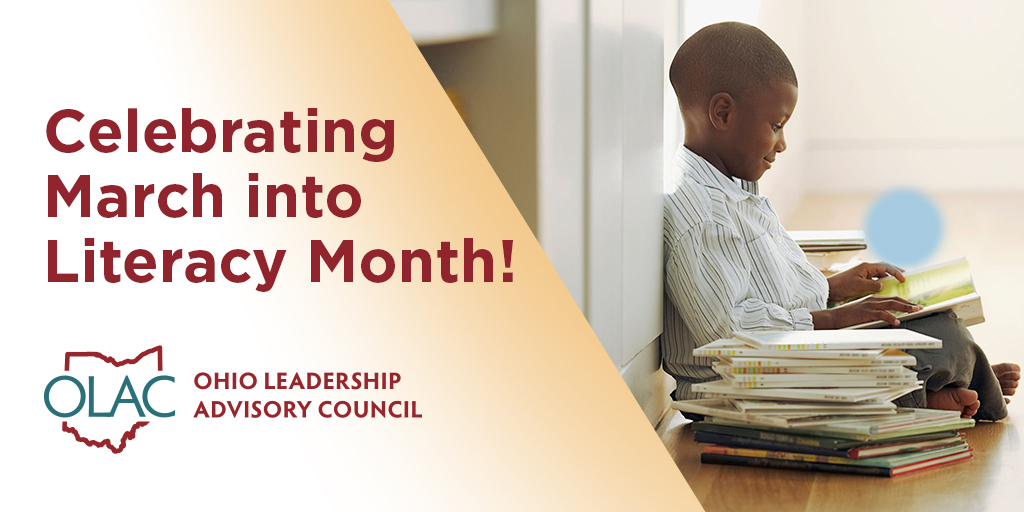Unlocking Literacy Success in Ohio: Opportunities for Educators

Ohio educators have an incredible opportunity to shape the future of literacy for our students. While challenges exist, there are clear, research-based strategies that can help every child become a confident reader. With 64.5% of Ohio’s 3rd graders proficient in reading, we are making progress—but we also have room to grow, and the good news is that we know what works.
A Strong Foundation: The Science of Reading
Extensive research has established a clear framework for effective literacy instruction, known as the Science of Reading. This approach highlights key components essential for developing strong readers, including:
- Phonemic awareness
- Phonics
- Fluency
- Vocabulary development
- Comprehension
Despite this well-documented guidance, many new teachers enter the classroom without formal training in these evidence-based strategies. Schools and districts can address this gap through focused professional development, equipping educators with the knowledge and tools necessary to teach reading effectively.
Additionally, integrated writing supports literacy by reinforcing comprehension and critical thinking skills, helping students articulate their understanding of texts. Providing dedicated reading time—both independently and with teacher support—fosters fluency and confidence, ensuring students engage with texts at a meaningful level.
Turning Challenges into Opportunities
Ohio’s literacy landscape presents challenges, but also clear opportunities for growth:
-
Strengthening Teacher Training:
The good news is that valuable resources are available to assist Ohio educators. The Ohio Department of Education and Workforce (ODEW), along with consultants from county offices, Educational Service Centers (ESCs), and State Support Teams (SSTs), provide expert guidance and targeted support. The Ohio Leadership Advisory Council (OLAC) also provides research-based literacy resources for Ohio educators at no cost. -
Early Literacy Exposure:
Early literacy development starts at home, and families play a crucial role in building a solid foundation for reading success. Research shows that regular exposure to books and language-rich interactions enhances a child’s reading readiness. Schools can partner with families and community organizations to expand access to books and early learning opportunities. Initiatives like book distribution programs, family literacy nights, and collaborations with libraries and early childhood centers help create a culture of reading. -
Disciplinary (Content-Area) Literacy:
Reading skills are not just for language arts. When all teachers—across subjects—incorporate vocabulary and comprehension strategies, students gain a deeper understanding of all content areas. Fluency is a key factor in this process. If students read too slowly or struggle with comprehension, their ability to engage with complex texts in science, social studies, and math is severely limited. Content-area teachers must see themselves as teachers of reading. While English Language Arts teachers have always focused on reading instruction, it is essential for all content-area teachers to equip students with the skills needed to read complex texts within their disciplines. Teaching students how to "read like a historian" or "read like a mathematician" ensures they receive quality vocabulary and comprehension instruction tailored to specific subject areas. To support literacy across subjects, teachers should provide access to additional reading materials, including both primary and secondary sources, allowing students to deepen their knowledge while strengthening their reading skills. Ensuring that every teacher plays a role in literacy instruction creates a more cohesive and supportive learning environment, setting students up for success across all academic areas. -
Addressing Chronic Absenteeism:
With 25.6% of Ohio students missing school regularly, we can implement creative solutions, such as family engagement programs and mentoring, to ensure students stay on track.
A Shared Vision for Literacy Success
The key to long-term literacy improvement is a unified, school-wide commitment to research-based reading instruction. This includes:
- Consistent, evidence-based literacy training for teachers.
- Regular progress monitoring to identify and support struggling readers early.
- Cross-curricular literacy integration, so students build reading skills in every subject.
- Engaging families and communities to support literacy beyond the classroom.
Moving Forward with Confidence
Ohio educators are not alone in the effort to strengthen literacy instruction—our state offers a wealth of knowledge, resources, and community support to drive meaningful change. Research confirms that effective reading instruction can rewire the brain for literacy success, emphasizing the importance of structured, evidence-based teaching.
To support this work, OLAC provides valuable professional learning opportunities, including expert-led sessions on literacy and the Leading Literacy online module. These resources empower educators with research-based strategies to enhance instruction and improve student outcomes.
By leveraging these powerful tools and working together, we can make Ohio a national leader in literacy education—one reader at a time.